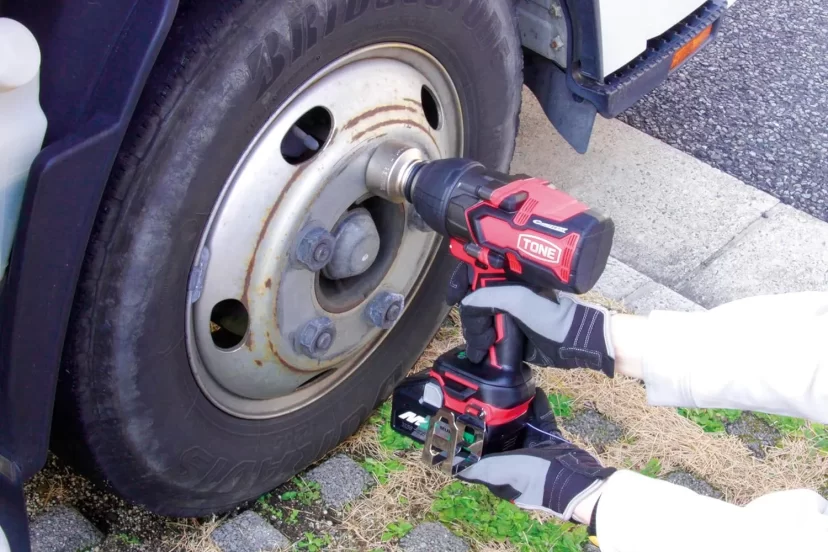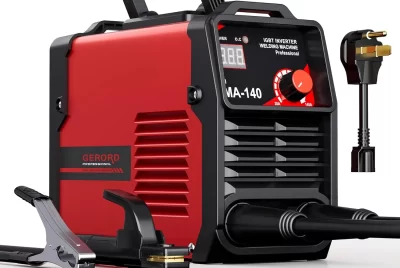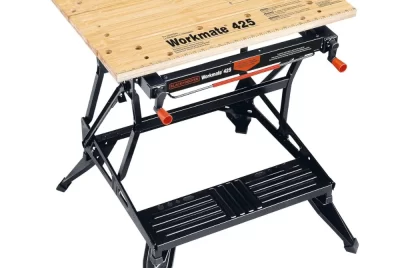Impact Wrenches: Finding the Perfect Fit for Your Garage
Walking into a friend’s garage can sometimes feel like entering a candy store – with the allure of shiny, powerful tools beckoning to be used. And if there’s one tool that garners admiration from professionals and hobbyists alike, it’s impact wrenches. With their high-torque capabilities and efficient performance, these devices can be a game-changer. But which one is right for you? Let’s dig in.
The Basics: What are Impact Wrenches?
For the uninitiated, impact wrenches are dynamo tools designed to deliver a high torque output with minimal user exertion. Picture this: it’s like having the strength of Thor’s hammer in your hand, ready to tackle even the most stubborn bolt.
The Evolution of Impact Wrenches: From Manual to Electric
Imagine our ancestors tightening and loosening bolts manually with a basic wrench. While it did the job, it was laborious and time-consuming. With the advent of pneumatic technology and later electric power, the humble wrench underwent an evolution, transforming into the powerhouse tool we know today.
Types of Impact Wrenches: A Comprehensive Look
Selecting an impact wrench isn’t as straightforward as it seems. There are several types, each with its unique features and advantages.
Air-Powered (Pneumatic) Impact Wrenches: The Professionals’ Choice
Often hailed as the workhorse of the automotive and construction industries, pneumatic impact wrenches have stood the test of time. Their continued popularity can be attributed to a combination of power, reliability, and efficiency.
How Do They Work?
At its core, a pneumatic impact wrench operates using compressed air. This compressed air is typically stored in tanks and delivered to the tool via an air compressor. When the tool is activated, this compressed air is released in controlled bursts. These bursts drive a rotating hammer mechanism inside the wrench, delivering powerful and consistent torque to the bolt or nut in question.
Why Do Professionals Prefer Them?
- Unparalleled Power: Pneumatic wrenches tend to offer higher torque output compared to their electric counterparts. This makes them ideal for heavy-duty tasks that require substantial force, such as tire removal in automotive shops or machinery maintenance in factories.
- Consistency: Given a stable and consistent air supply, pneumatic wrenches provide a steady torque output. This consistency ensures that the tool doesn’t falter during extended use.
- Durability: With fewer electronic components than electric models, pneumatic wrenches generally have a longer lifespan. Their construction is robust and designed to withstand the rigors of daily professional use.
- Cooler Operation: Since they run on air, pneumatic wrenches don’t heat up as quickly as electric models, reducing the risk of overheating during prolonged tasks.
- Cost-Effective: While the initial setup (including the air compressor) might be costly, in the long run, pneumatic tools tend to be more cost-effective. They require less maintenance, and their prolonged lifespan means reduced replacement costs.
Challenges with Pneumatic Wrenches
While they offer numerous advantages, pneumatic wrenches are not without their challenges:
- Dependency on Air Compressor: Without a reliable compressor, the wrench is rendered useless. This means you have an additional equipment cost and need space for compressor storage.
- Portability: Being tethered to an air hose limits mobility. This can be cumbersome, especially when working in tight or confined spaces.
- Maintenance of Compressor: The compressor itself requires periodic maintenance, like checking air filters and ensuring there’s no moisture buildup in the tanks.
- Noise: Compressors can be noisy, which might necessitate ear protection during extended use.
Conclusion
Pneumatic impact wrenches are favored by many professionals for their power, durability, and consistency. However, they come with their own set of considerations, primarily revolving around the dependency on an air compressor. For those willing to invest in the initial setup and seeking a tool for heavy-duty, regular use, a pneumatic impact wrench is often the preferred choice.
Electric Impact Wrenches: The Blend of Modernity and Convenience
Electric impact wrenches, both corded and cordless, have become increasingly popular due to their convenience, portability, and versatility. They cater to a range of users, from DIY enthusiasts to professionals looking for an adaptable tool.
How Do Electric Impact Wrenches Work?
Electric impact wrenches utilize an electric motor to generate torque. This motor converts the electrical energy into mechanical energy, causing the internal hammering mechanism to rotate and produce torque. The efficiency of the electric motor and the design of the mechanism play pivotal roles in the power and performance of the tool.
Corded Electric Impact Wrenches
Pros:
- Continuous Power: Since they’re plugged into a power outlet, corded impact wrenches can operate for extended periods without any drop in power.
- No Batteries: No need to worry about battery degradation or replacement costs.
- Consistent Torque: Offers a steady torque output, making them reliable for a range of tasks.
- Usually Lighter: Without a heavy battery pack, they tend to be lighter than their cordless counterparts.
Cons:
- Limited Mobility: Being tethered to a power source limits your range and can be cumbersome when moving around a workspace.
- Power Outlet Dependency: Requires proximity to a power outlet, which can be limiting based on the workspace.
- Cables Can Get In The Way: The power cord can sometimes become an obstruction, especially in tight spaces.
Cordless Electric Impact Wrenches
Pros:
- High Mobility: Being battery-operated, they offer freedom of movement, making it easier to work in various locations or tight spots.
- Convenience: No cords mean a quicker setup and teardown time. It’s grab-and-go!
- Versatility: Their portability makes them versatile, and ideal for a variety of tasks from garage work to on-the-spot field repairs.
- Advancing Battery Technology: With advancements in battery tech, many modern cordless tools offer longer battery life and quicker charge times.
Cons:
- Battery Dependency: Over time, batteries degrade and require replacement. They also need to be charged, which means downtime if you don’t have spare batteries on hand.
- Potential for Reduced Power: Some users believe that cordless variants, especially older models, might not offer the same power as corded or pneumatic counterparts. However, this gap is narrowing with technological advancements.
- Weight: The addition of the battery can make the tool heavier, potentially causing user fatigue during extended use.
Conclusion
Electric impact wrenches, whether corded or cordless, cater to a modern demand for convenience, adaptability, and efficiency. While corded models offer consistent power, cordless ones shine in portability and versatility. Your choice will largely depend on the specific demands of your tasks, your workspace environment, and your preference for mobility versus consistent power. In the ever-evolving world of power tools, electric impact wrenches have certainly secured their place, bridging the gap between traditional mechanical tools and the future of tech-driven solutions.
Hydraulic Impact Wrenches: The Titans of Torque
Hydraulic impact wrenches, often revered as the giants in the world of high-torque tools, are designed to tackle tasks that other wrenches can only dream of. Their prowess lies in harnessing the might of fluid mechanics to deliver unparalleled power and precision.
The Mechanics of Hydraulic Impact Wrenches
At their heart, hydraulic impact wrenches operate on the principle of Pascal’s Law. This law states that when pressure is applied to a fluid in a closed system, that pressure is distributed uniformly throughout the fluid. In the case of these wrenches, hydraulic fluid (usually oil) is pressurized and then channeled to drive a piston, which in turn delivers rotational force or torque to the output shaft.
Why Are They Preferred for Industrial Tasks?
- Monumental Torque: These tools can generate immense amounts of torque, often surpassing their pneumatic and electric counterparts. This makes them ideal for tasks like heavy machinery maintenance, large-scale construction projects, and industrial assembly.
- Precision: The use of fluid mechanics allows for precise control of the torque output. This is crucial in industries where bolt tension must meet specific standards.
- Consistency: Given a consistent hydraulic fluid supply, these wrenches deliver steady torque without the risk of fluctuation, ensuring reliable results each time.
- Safety: With fewer moving parts compared to pneumatic and electric tools, and the absence of sparks or high heat, hydraulic wrenches often pose a reduced risk of accidents in volatile environments.
- Durability and Longevity: Constructed to tackle rigorous tasks, these tools are robust, built to endure harsh industrial conditions and have a prolonged lifespan.
Drawbacks of Hydraulic Impact Wrenches
- Setup Complexity: Hydraulic systems, complete with fluid reservoirs and pumps, can be complex to set up and maintain.
- Size and Weight: Due to the inherent nature of hydraulic systems, these wrenches can be bulkier and heavier, which might limit their applicability in tight spaces or for more nimble tasks.
- Cost: Industrial-grade hydraulic tools, along with their supporting equipment, come with a heftier price tag compared to other wrench types.
- Maintenance: Hydraulic systems require periodic checks for fluid levels, potential leaks, and overall system integrity.
Conclusion
Hydraulic impact wrenches are the unsung heroes in industries that demand extreme torque and precision. While they might be overkill for a home garage or light-duty tasks, in environments like shipyards, construction sites, or heavy machinery plants, they are indispensable. They epitomize the culmination of fluid mechanics and tool engineering, offering unparalleled power where it’s needed the most. If you’re in an industry where bolts are as thick as your arm and the margin for error is razor-thin, the hydraulic impact wrench might just be your best friend.
Factors to Consider When Choosing an Impact Wrench
Power Needs and Torque
Before you make a purchase, introspect on your power needs. Do you need a beast, or would a more modest device suffice? Remember, too much power can sometimes be overkill and damage the very thing you’re working on.
Size and Weight
Especially if you’ll be moving around or working in tight spaces, a bulky wrench might not be ideal. Some models are compact yet pack a punch, while others, with their added weight, ensure less vibration and more stability.
Price and Brand Reputation
Investing in tools is just that – an investment. It’s tempting to save a few bucks, but sometimes that can lead to regret. More established brands often offer reliability and better customer support.
Battery Life (for Cordless)
If you’re leaning towards a cordless model, check the battery specs. Nothing is more frustrating than running out of juice mid-task.
Noise Level
A lesser-considered factor, but important nonetheless. Some impact wrenches can be particularly noisy, which might not be ideal if you’re in a residential setting.
Tips for Using Your Impact Wrench Effectively
- Preparation: Clean the bolt or nut area before using the wrench. A clean working area ensures better grip and reduces slippage risks.
- Right Socket: Ensure you’re using the appropriate socket size. A mismatch can damage the bolt or the tool.
- Safety First: Always wear protective eyewear and gloves. High-torque tools can sometimes be unpredictable.
Conclusion
With the plethora of options available today, choosing the right impact wrench might seem daunting. But by understanding your requirements, you can find the perfect fit for your garage. Whether you’re assembling furniture, changing car tires, or tackling heavy-duty industrial tasks, there’s an impact wrench tailored for you.
Read more on Garage Tool Info
FAQs
- Why does torque matter in an impact wrench?
The torque is the rotational force of the tool. More torque means the tool can handle bigger, tighter bolts and nuts.
- How often should I service my impact wrench?
Regular maintenance ensures longevity. For heavy users, a monthly check is advisable. For occasional users, every 3-4 months should suffice.
- Can I use my impact wrench for drilling?
While some do, it’s not ideal. Impact wrenches are designed primarily for bolts and nuts. For drilling, you’d be better off with an impact driver or a drill.
- Does higher voltage mean more power in cordless impact wrenches?
Not necessarily. While voltage can be an indicator, efficiency and battery technology also play roles.
- Can I over-torque with an impact wrench?
Absolutely. Always be mindful of the torque settings, especially when working with delicate or specific torque requirements.
In your quest for the perfect impact wrench, remember: it’s not just about power, but also precision, reliability, and suitability for your tasks. All the best with your choice, and happy wrenching!




